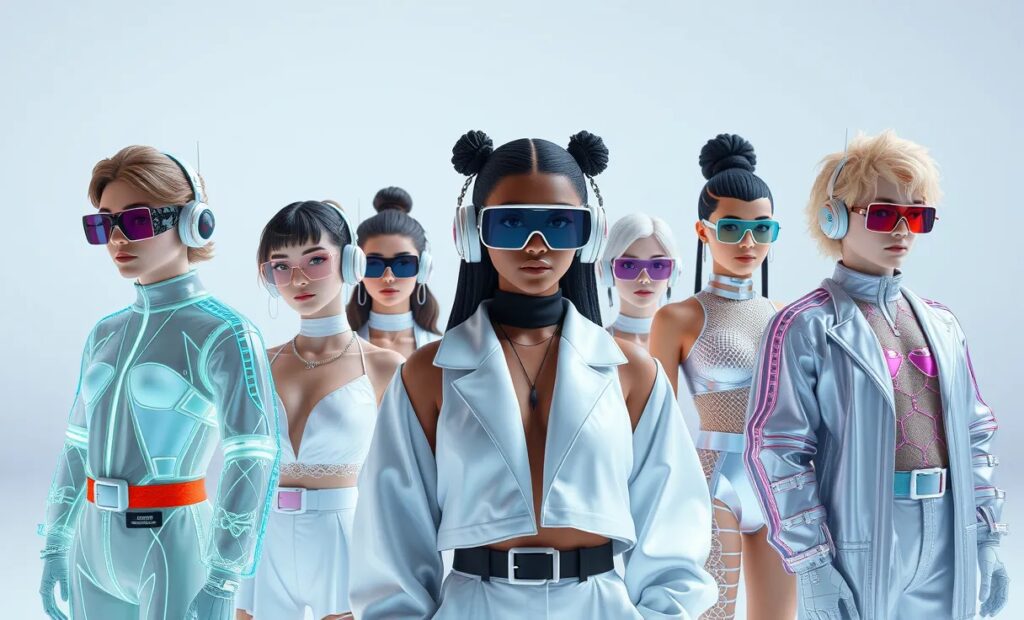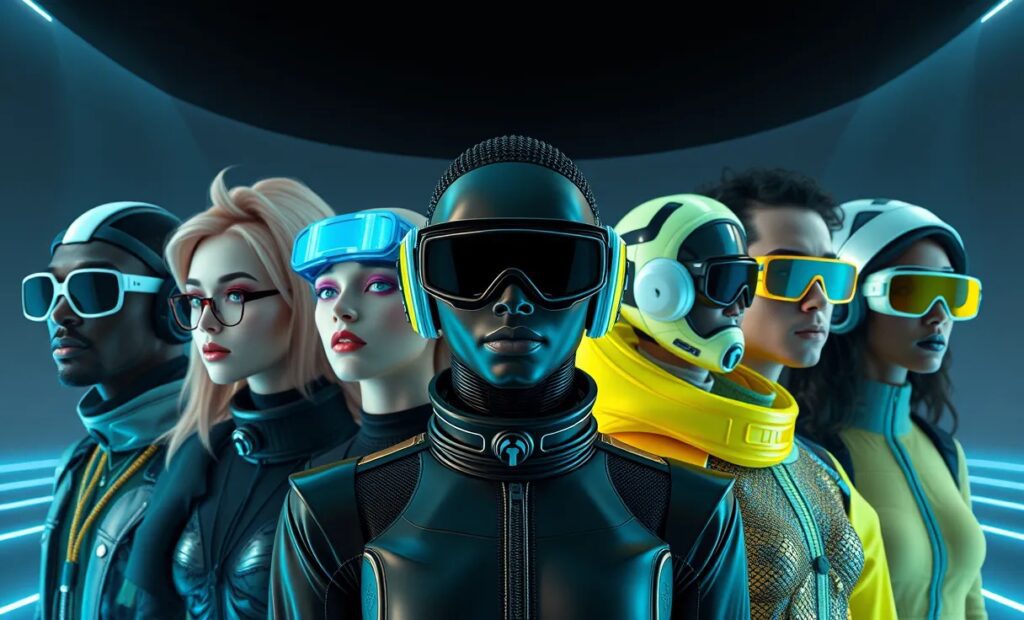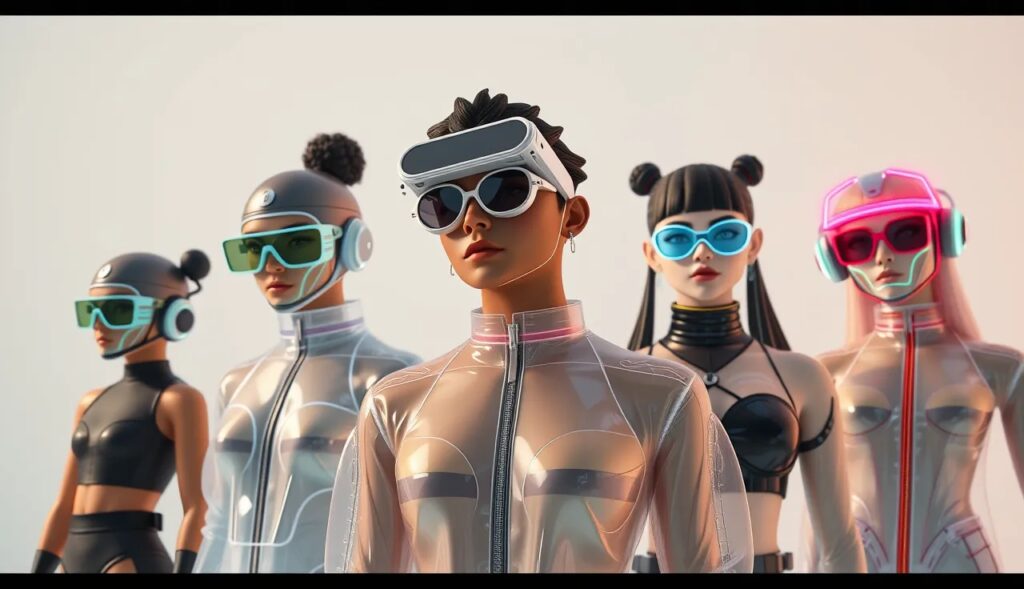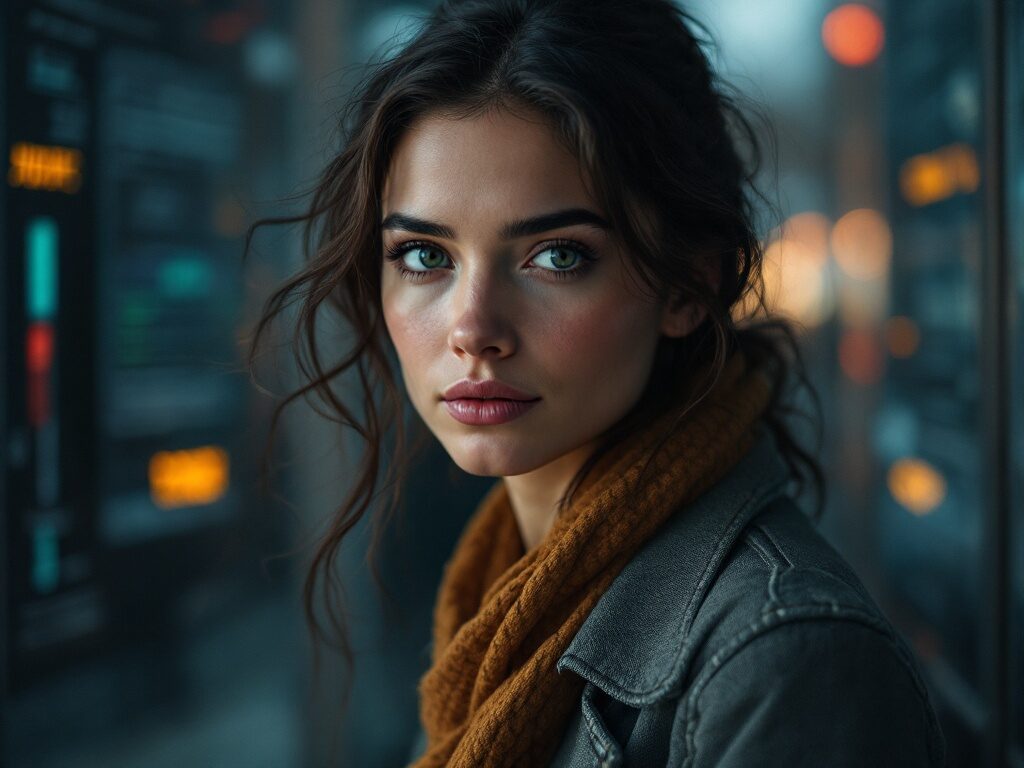
Virtual influencers are buzzing with possibilities. Choosing between realistic and fantasy styles sets the tone for your digital persona’s future. Each approach has its own charm, opportunities, and challenges.
Let’s break it all down so you can craft an influencer that connects with your audience.
What Defines a Realistic Virtual Influencer?
Mimicking Real-World Human Features
A realistic virtual influencer strives for lifelike detail, resembling actual people in appearance and movement. From skin texture to expressions, they could pass as real at first glance. This style blurs the line between virtual and reality, often aiming to appear approachable and relatable.
Grounding in Relatable Storytelling
Realistic influencers thrive on everyday narratives. Whether it’s sharing workout routines or sipping coffee by the window, they excel at connecting with their audience through relatable content. These personas can evoke an emotional connection that feels genuine and sincere.
Tech Behind Realism
High-definition 3D modeling and motion capture bring this style to life. Investing in realism means focusing on nuanced details, requiring advanced technology and a talented team. It’s more effort-intensive but can pay off if you’re targeting a hyper-authentic vibe.

The Allure of Fantasy-Style Virtual Influencers
Breaking Free from Reality
Fantasy-style influencers embrace the whimsical and surreal. These characters might have glowing eyes, fairy wings, or an otherworldly aura that draws fans into their universe. The freedom here lies in creativity—the sky’s the limit.
Storylines Beyond the Ordinary
Fantasy personas thrive in storytelling that escapes mundane life. They can exist in dreamlike landscapes, wield magic, or embody the essence of mythology. This allows brands to craft escapist experiences that captivate audiences craving adventure.
Creative Flexibility with Unique Aesthetics
Fantasy styles allow for experimentation. You can push boundaries in design, color palettes, and even cultural influences to create something entirely original. Unlike realism, you don’t have to adhere to everyday norms.
Target Audience: Who’s Watching?
Realistic Styles and Everyday Appeal
Audiences who prefer relatable and practical content lean towards realistic influencers. They often appeal to fitness enthusiasts, fashion lovers, or tech-savvy consumers who value authenticity in storytelling.
Fantasy Styles and Niche Communities
On the flip side, fantasy influencers tend to attract niche audiences. Think gamers, anime fans, or those immersed in sci-fi and fantasy culture. They offer escapism and inspiration to viewers seeking something out of the ordinary.
Let’s dive deeper into the strategy behind choosing one over the other.
Branding Goals: Aligning Style with Your Mission
Realism for Trust and Authenticity
If your brand thrives on building trust or showcasing tangible products, realistic virtual influencers can be the ideal choice. They make it easier for viewers to picture themselves using the products or engaging with services. Think of a lifelike influencer modeling your new clothing line or demonstrating how your skincare works in close-ups.
Fantasy for Bold and Visionary Brands
Fantasy influencers are perfect for brands that want to stand out with unique storytelling. They allow you to create a distinctive image, ideal for launching tech products, games, or anything futuristic. This style can turn your influencer into a brand mascot, amplifying recognition through their unique visuals.
Combining Realism and Fantasy
Some brands mix elements of both. For instance, a lifelike influencer might have fantastical traits, like glowing tattoos or supernatural powers. This hybrid approach can attract diverse audiences while giving you the flexibility to explore imaginative campaigns.

Resources: Time and Budget Considerations
Cost of Realistic Influencers
Developing a realistic virtual influencer often requires more time and investment. Advanced rendering tools, lifelike modeling, and motion capture systems can rack up costs. However, the payoff lies in their mass appeal and ability to connect across demographics.
Fantasy: Balancing Creativity and Costs
Fantasy influencers can be more cost-effective if you simplify their design. Since they don’t adhere to human constraints, their animation can be less intricate. However, adding complex features—like magical effects or layered environments—might increase expenses.
The Long-Term View
Both styles require upkeep. Realistic influencers demand consistent updates to maintain their authenticity as technology evolves, while fantasy personas need fresh narratives to keep fans engaged.
Platform Suitability: Where Will They Shine?

Social Media Platforms for Realism
Platforms like Instagram and TikTok are ideal for realistic influencers. Their relatable appearance makes them a natural fit for lifestyle content and engaging trends. Brands looking for shares and saves benefit from the everyday appeal of realism.
Fantasy in Niche Communities
Fantasy influencers thrive on platforms like Twitch, YouTube, or even the Metaverse. Their ability to draw viewers into immersive worlds aligns perfectly with gaming, tech, or futuristic content. These platforms allow for longer storytelling and creative visuals.
Navigating Challenges in Execution
Realism: Balancing Detail with Audience Expectations
Creating a lifelike influencer means walking a fine line between authenticity and the uncanny valley. Too perfect, and they might feel robotic; too flawed, and they lose appeal. Constant refinement is key.
Fantasy: Building and Sustaining Immersion
The challenge with fantasy influencers lies in keeping their world-building consistent. Fans expect depth and detail, and neglecting this can break the illusion. A solid narrative plan ensures longevity and engagement.
Your choice between realistic and fantasy styles hinges on your audience, brand identity, and long-term goals. Ready to create your digital masterpiece? Let’s explore how to make your virtual influencer truly unforgettable!
Marketing Strategies: Leveraging Each Style
Realistic Influencers for Emotional Engagement
Realistic influencers excel at fostering a sense of empathy and connection. To capitalize on this, use them in campaigns focused on storytelling, testimonials, or behind-the-scenes looks. For example, a virtual influencer could “share” their daily life, discussing struggles and triumphs in a way that resonates with your audience.
Fantasy Influencers for Viral Appeal
Fantasy influencers bring a wow factor to campaigns. Use their unique aesthetics to craft viral visuals or interactive experiences. A magical influencer could “cast a spell” on a new product launch, incorporating augmented reality (AR) filters or gamified content to spark excitement and shares.
Influencer Partnerships
Realistic influencers can easily collaborate with human influencers to add credibility. Imagine them engaging in duets on TikTok or showing up in live-streamed Q&A sessions. Fantasy influencers, meanwhile, might partner with other virtual personas to create cross-branding narratives or explore collaborative storytelling.
Measuring Success: Realistic vs. Fantasy
Metrics for Realistic Influencers
Track metrics like engagement rates, conversions, and brand sentiment. Realistic influencers often excel at driving purchases and creating conversations around tangible products or relatable themes.
Fantasy Metrics: Impressions and Virality
Fantasy influencers shine in reach and brand visibility. They tend to dominate platforms like YouTube and Twitch, where their unique visuals can grab attention and generate viral moments. Metrics like impressions, shares, and time spent on content are key indicators of success.
A/B Testing Across Campaigns
Experiment with both styles to see which resonates best with your audience. For instance, test a realistic influencer promoting a product on Instagram versus a fantasy influencer introducing it through an immersive video or AR campaign.
Final Thoughts: Finding Your Perfect Match
Choosing between realistic and fantasy styles isn’t just about aesthetics—it’s about aligning with your brand’s goals, audience, and storytelling ambitions. Realism builds trust, while fantasy sparks imagination.
Need a Blend? You’re Not Alone
Many brands adopt a hybrid approach, using a realistic influencer for lifestyle content and a fantasy persona for special campaigns. This strategy maximizes reach and keeps audiences intrigued.
Start by defining your core message and audience preferences, then let your creativity soar. With the right strategy, your virtual influencer could become the next big icon.
FAQs
What makes a realistic virtual influencer relatable?
Realistic influencers feel like someone you could meet in real life. Their stories often mirror everyday experiences, like sharing fitness goals or recommending products they “use.” For example, Lil Miquela, a famous realistic virtual influencer, posts about social causes and music, making her relatable to her fans.
Why are fantasy influencers popular in gaming communities?
Fantasy influencers thrive in niches where creativity and escapism are key, like gaming. Gamers often connect with characters who embody their interests—imagine an elf-themed virtual influencer promoting a fantasy role-playing game or a cyberpunk avatar unveiling tech gear. Their immersive worlds feel like an extension of the gaming experience.
Are hybrid styles effective for branding?
Yes, combining realism and fantasy can broaden appeal. For instance, a mostly realistic influencer could have a glowing cybernetic arm or mystical tattoos, adding intrigue without losing relatability. Hybrid styles work well for brands that want to remain grounded while injecting some flair.
Which style requires more resources to maintain?
Realistic influencers tend to demand more ongoing refinement, especially as technology evolves. Their appearance must remain lifelike and keep pace with trends. Fantasy styles can be lower maintenance initially but may need creative updates to sustain engagement—such as new magical abilities or expanding their fictional universe.
Can I use a virtual influencer on multiple platforms?
Absolutely! A realistic influencer might dominate on Instagram and TikTok with lifestyle content, while a fantasy influencer could shine on Twitch or YouTube in immersive narratives. Tailoring their content to each platform ensures maximum impact.
Both styles offer unique opportunities, and the right choice depends on your brand’s goals and audience preferences. Ready to build your virtual influencer? The possibilities are endless!
How do brands ensure a realistic influencer doesn’t fall into the “uncanny valley”?
The “uncanny valley” happens when a virtual human looks almost real but still feels off, making people uncomfortable. To avoid this, creators focus on expressive facial animations, natural movements, and small imperfections like freckles or slight asymmetry. For example, brands like Baidu’s Xiaoice achieve realism by emphasizing emotional intelligence over flawless appearance.
Can fantasy influencers tell serious or emotional stories?
Definitely! Fantasy doesn’t have to mean frivolous. A fantasy influencer could share a deep, metaphorical story using their unique world. For example, an influencer with angelic wings might discuss themes of resilience and redemption, tying these narratives to your brand’s values. Their creative edge adds emotional depth that stands out.
How do I decide which style resonates with my target audience?
Start by researching your audience’s interests. A tech-savvy audience might enjoy futuristic, fantasy styles, while a general lifestyle audience may prefer the authenticity of realism. Consider conducting surveys or A/B tests to gather feedback before committing. For instance, a gaming headset brand could test a fantasy influencer in one campaign and a realistic one in another.
Are realistic influencers better for product promotions?
Realistic influencers often make it easier for viewers to imagine using the product themselves. For instance, a virtual influencer modeling clothes in everyday settings feels more relatable than a fantasy character. However, if your product has a creative or futuristic vibe, a fantasy influencer might deliver a more memorable impact.
Do fantasy influencers work outside niche markets?
Yes, but they require strategic branding. While fantasy influencers are a natural fit for gaming and tech, they can also thrive in luxury, cosmetics, or even food campaigns by presenting these products in magical or otherworldly contexts. For example, a glowing fairy might showcase a high-end skincare line as part of an enchanting “ritual.”
By understanding these dynamics, you’ll be well-equipped to choose, create, and position a virtual influencer that matches your brand vision.
Useful Links for Creating and Managing Virtual Influencers
3D Modeling and Animation Tools
- Blender (Free): https://www.blender.org/
- Maya by Autodesk: https://www.autodesk.com/products/maya/overview
- ZBrush by Pixologic: https://pixologic.com/
- Unreal Engine: https://www.unrealengine.com/
- Adobe Character Animator: https://www.adobe.com/products/character-animator.html
Agencies Specializing in Virtual Influencers
- Brud (Creators of Lil Miquela): https://brud.fyi/
- The Diigitals: https://thediigitals.com/
- Superplastic: https://superplastic.co/
Online Tutorials and Courses
- LinkedIn Learning (3D Modeling and Animation): https://www.linkedin.com/learning/
- Blender Guru (YouTube Tutorials for Blender): https://www.youtube.com/user/AndrewPPrice
- Unreal Engine Learning Hub: https://www.unrealengine.com/en-US/onlinelearning
Industry Blogs and News
- Influencer Marketing Hub: https://influencermarketinghub.com/
- VRScout: https://vrscout.com/





